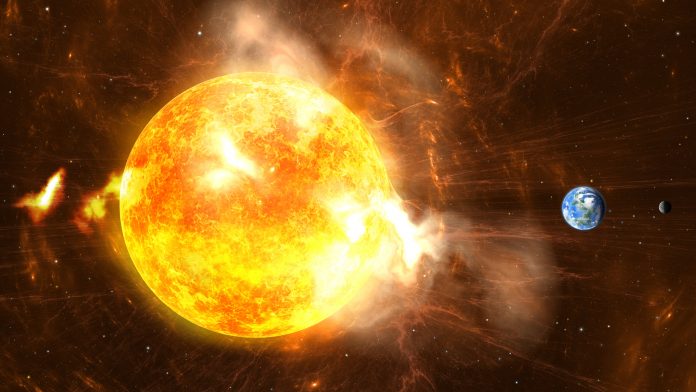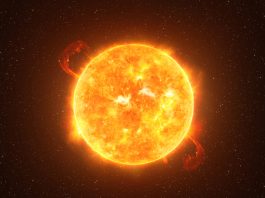A research team from Lund University found evidence of an extreme solar storm when analysing ice cores from Greenland and Antarctica.
What have scientists determined regarding the solar storm?
“We have studied drill cores from Greenland and Antarctica and discovered traces of a massive solar storm that hit Earth during one of the Sun’s passive phases about 9,200 years ago,” explained Raimund Muscheler, geology researcher at Lund University.
The researchers scoured the drill cores for peaks of the radioactive isotopes beryllium-10 and chlorine-36. These are produced by high-energy cosmic particles that reach Earth and can be preserved in ice and sediment.
“This is time consuming and expensive analytical work. Therefore, we were pleasantly surprised when we found such a peak, indicating a hitherto unknown giant solar storm in connection with low solar activity,” commented Raimund Muscheler.
This discovery has confounded researchers because this storm would have taken place during one of the Sun’s quieter phases, which is generally when Earth is believed be to less exposed to such events.
How does the Sun influence this?
The Sun is considered a prerequisite for all life on Earth; however, it has been noted from scientific observation that the star can also generate problems. For example, when there is strong activity on the surface of the Sun, more energy is released, which can increase the threat of geomagnetic storms. This can result in power outages and communication disturbances.
How can we predict solar storms?
Scientists have noted that foreseeing solar storms is difficult; it is currently believed that they are more likely during an active phase of the sun, or solar maximum, during the so-called sunspot cycle. However, a new study published in Nature Communications indicates that this may not always be true for large storms.
The research team have noted that if a similar solar storm were to take place today, it could have devastating consequences. In addition to power outages and radiation damage to satellites, it could pose a danger to air traffic and astronauts as well as a collapse of various communication systems.
“These enormous storms are currently not sufficiently included in risk assessments. It is of the utmost importance to analyse what these events could mean for today’s technology and how we can protect ourselves,” concluded Raimund Muscheler.









